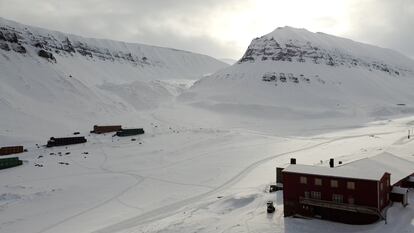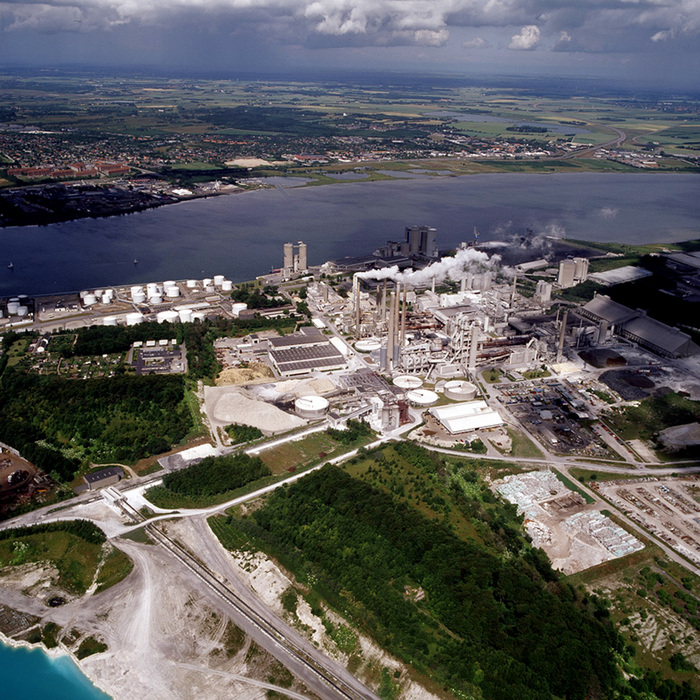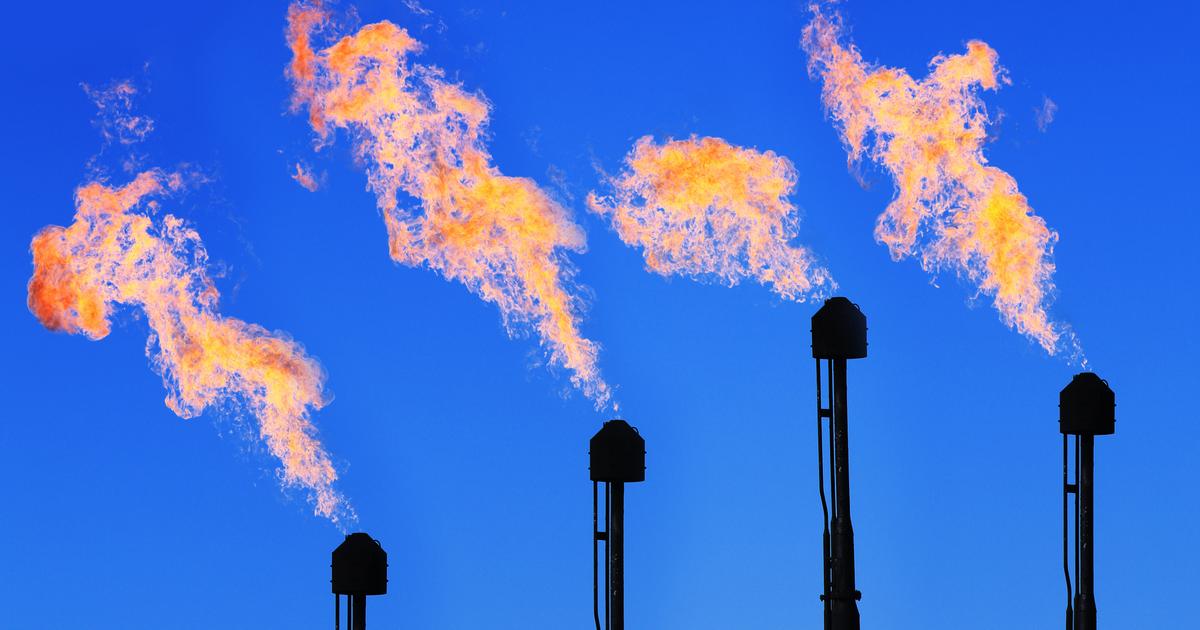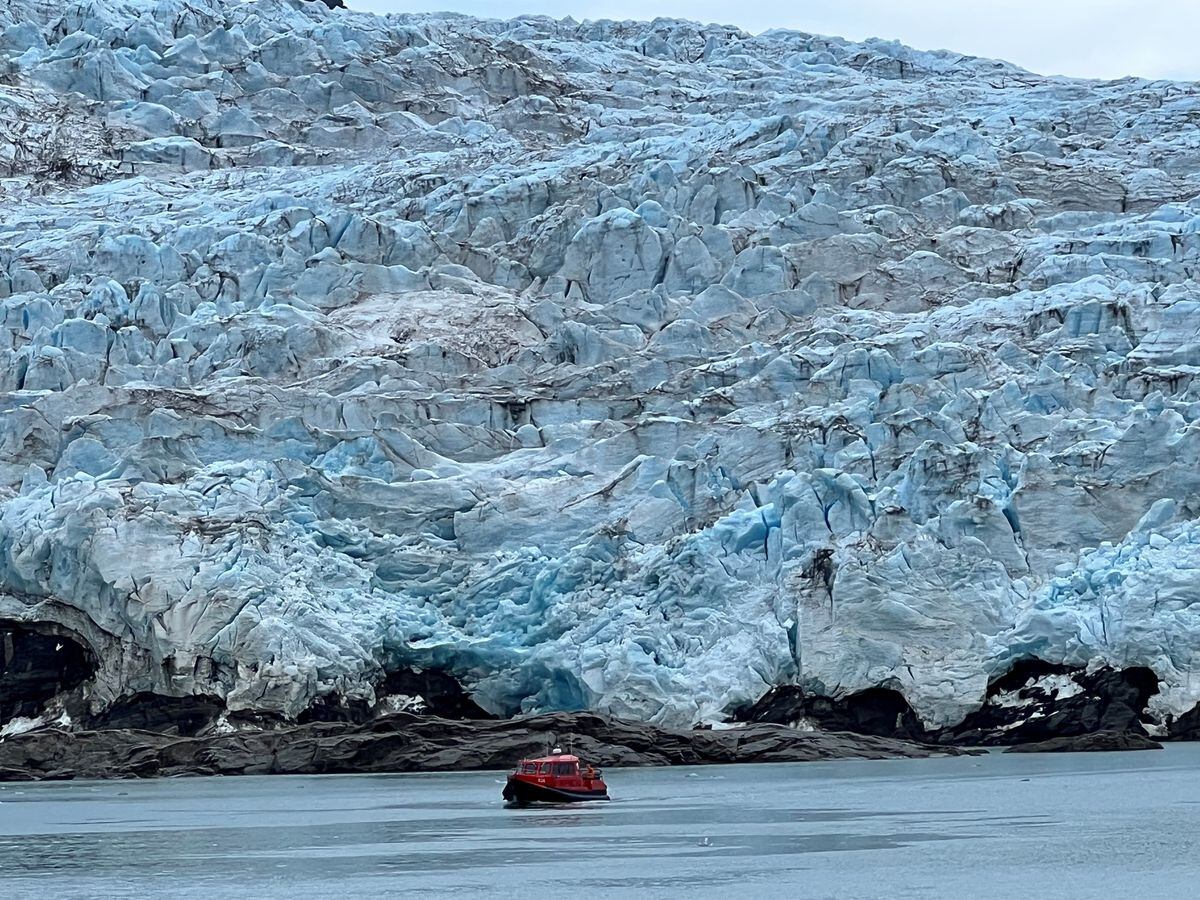Rudolf Denkmann finds it increasingly difficult to recognize the archipelago that has enraptured him since he set foot on it for the first time, almost 15 years ago.
This scientist, who is in his fifties and has two decades of experience in collecting meteorological data in polar areas, watches overwhelmed how climate change is rapidly transforming the nine main islands that make up Svalbard, a Norwegian territory located about 1,000 kilometers of the North Pole.
No part of the planet is warming faster than Svalbard.
Since 1971 the average annual temperature has risen by around four degrees centigrade, and almost seven if what is analyzed are the winter months.
The rate of warming is up to six times more pronounced than the planet average, and higher than in the rest of the Arctic.
The effects of the drastic rise in temperatures are already more than evident.
This vast archipelago
, terra incognita
until the end of the 16th century, has become a gigantic natural laboratory to which hundreds of scientists from all continents specialized in multiple disciplines arrive: climatologists, glaciologists, experts in ocean currents, or even magnetic field researchers. on Earth attracted by the northern lights.
Svalbard is a microcosm: a vastness of ice and snow-capped mountains, treeless, where roads and infrastructure are virtually non-existent.
It is territory of polar bears -there are more than people-, walruses, seals, reindeer and arctic foxes;
a region in which some glaciers recede more than 20 meters every day and landslides on the coasts have become frequent.
Denkmann has been working since January at the Svalbard Integrated Observing System (SIOS), a research center in Longyearbyen, the largest town in the archipelago.
"You come back after spending four years abroad and you perceive a lot of changes around you," says the French scientist, who last winter returned to Spitsbergen, the only island in Svalbard with a permanent population.
"Some glaciers may have moved more than a kilometer," adds the expert, with a profuse beard and slow pace, in an interview in his office, during a trip financed by the European Parliament.
Rudolf Denkmann, SIOS researcher, on April 19 in his office in Longyearbyen. Luis Manuel Rivas
The SIOS, located in the facilities of the small University of Svalbard, has a wide network of instruments for the measurement of meteorological data deployed by different key points of the archipelago.
Together with almost three dozen other scientific institutions, it participates in the European project Arctic Passion, which has been endowed with 15 million euros of community funds to promote the integration of international environmental observation systems for the Arctic.
With more than 1,500 glaciers and an area eight times larger than that of the Canary Islands, the landscape is irremediably transformed into Svalbard, a territory in which economic activity was limited to whale fishing for a few centuries, and later to mining. of coal, a sector that today is in full phase of dismantling.
The archipelago has just over 2,500 inhabitants.
The Svalbard Treaty – which recognizes Norwegian sovereignty and was signed in Paris in 1920 – allows anyone to settle on the islands without having to meet the residency requirements that apply in the rest of Norway.
Citizens of more than 50 nationalities live in the remote region, the vast majority in Longyearbyen, mainly attracted by job offers in the booming tourism industry.
One of them is Jaime Andrés Bonilla, a 29-year-old Colombian who arrived in the picturesque town almost a decade ago.
Bonilla remembers well July 25, 2020, the day Svalbard's maximum temperature was recorded: 21.7 degrees Celsius.
“It was incredible, everyone in short sleeves on the streets of Longyearbyen;
never seen.
And in the houses, how hot it was! ”, He recounts.
The effects of warming have become a headache for the inhabitants of Longyearbyen.
Climate change has already claimed its first fatalities.
Since 2015, several people have died in Svalbard due to snow avalanches or landslides.
The rapid melting of permafrost - the ground that remains frozen throughout the year - also has serious consequences.
Around 10% of the houses in the town have had to be relocated to safer areas in recent years, as melting ice has damaged the weak foundations of the multicolored wooden houses.
The fjord on which Longyearbyen sits hasn't frozen over in over a decade, something unimaginable in the middle of the last century.
On a steep hillside is a small cemetery, with dozens of simple white wooden crosses.
In Svalbard there has been no burial since the 1950s;
they were banned by the authorities after it was found that the layer of ice surrounding the coffins prevented the bodies from decomposing.
Today, shrinking permafrost threatens to pull the coffins out of the ground.
View of one of the areas of Longyearbyen, on April 20. Luis Manuel Rivas
The World Seed Bank, one of the symbols of Svalbard, has also already suffered the consequences of climate change.
Built 120 meters deep in a sandstone mountain, and designed to withstand an earthquake or a nuclear attack, this warehouse that houses millions of seeds from all over the planet suffered floods in 2017 caused by the reduction of permafrost.
The Norwegian Government has invested more than €10 million in reparations.
The information collected through centers such as SIOS and projects such as Arctic Passion allow the design of projections on the modification of the climate in the archipelago.
The
Svalbard 2100 report
, produced by the Norwegian Environment Agency, paints a very pessimistic picture.
The average annual temperature of the islands may rise up to a further seven degrees Celsius before the end of the century.
Frosts will be reduced from around 250 per year to around half.
Precipitation will increase significantly (at least 45%), but it will do so mainly in the form of rain, even during the winter, something that is no longer extraordinary.
“Sometimes you go outside in December or January, at 80 degrees North latitude, in the middle of the polar night, and it should be very cold;
but no, it's raining.
It is very impressive," says Marion Maturilli, scientific coordinator of a Franco-German Arctic research base located on the island of Spitsbergen, in a video call.
More than 20 years ago Maturilli first came to Ny-Ålesund, the northernmost permanent settlement in the world (about 35 inhabitants in winter and just over a hundred in summer), 115 kilometers northwest of Longyearbyen.
The German, who is a researcher at the Alfred Wegener Institute and has dedicated years of study to the so-called 'Arctic amplification of climate change', describes how for decades the scientific community believed that Blomstrandhalvøya, an islet off Ny-Ålesund, was a peninsula.
“It was fully covered by a glacier;
now the ice has receded so much that you can even navigate through the strait, ”she laments.
The extremely rapid warming in the area is due to multiple factors, one of the main ones being the melting of the ice in recent decades.
In the Arctic Ocean, about a third of its frozen mass has melted in the last 18 years, especially around Svalbard and in the Barents Sea.
The loss of tens of thousands of square kilometers of ice, in which solar radiation was previously reflected, generates the appearance of dark water masses that begin to absorb the Sun's energy, raising the temperature even more.
Blocks of ice floating off the coast last week near the island of Spitsbergen.
The increase in the volume of liquid water around the coasts of Svalbard in turn leads to greater evaporation;
many more clouds in the area.
The cloud cover acts as a layer that retains the heat of the earth's surface and further softens the temperature.
Alterations in atmospheric circulation also influence the warming of these Norwegian islands.
Storms and anticyclones move differently than in recent decades, causing masses of warm air to reach very northern regions.
Changes in Svalbard's climate do not only affect the region.
Nils Torvalds, a Finnish MEP from the liberal group Renew Europe, points out by phone that the melting of permafrost on the Norwegian islands or in Lapland “is an alarm signal even for Spain;
for all of Europe.
It will have different consequences in each area: floods, droughts, cold waves.”
Swedish Malin Björk, MEP since 2014 and member of the Group of the European United Left (GUE/NGL), agrees via email: "The melting of the Arctic is an issue with very serious consequences for the entire European population, regardless where you reside."
Svalbard's transformation has meant that routes that were only accessible by snowmobile or dog sled 15 years ago are now navigable for small cruisers.
Tourists can watch the Arctic melt a few meters away, surrounded by small icebergs, on one of those days when the Sun does not even come close to the horizon and time seems to stand still in Svalbard;
but the hours are passing, and the passage of time continues to be a time bomb for its population, its fauna and its fragile ecosystem.
Follow all the international information on
and
, or in
our weekly newsletter
.








